Nitrogen and phosphorus crucial, but little benefit from potassium
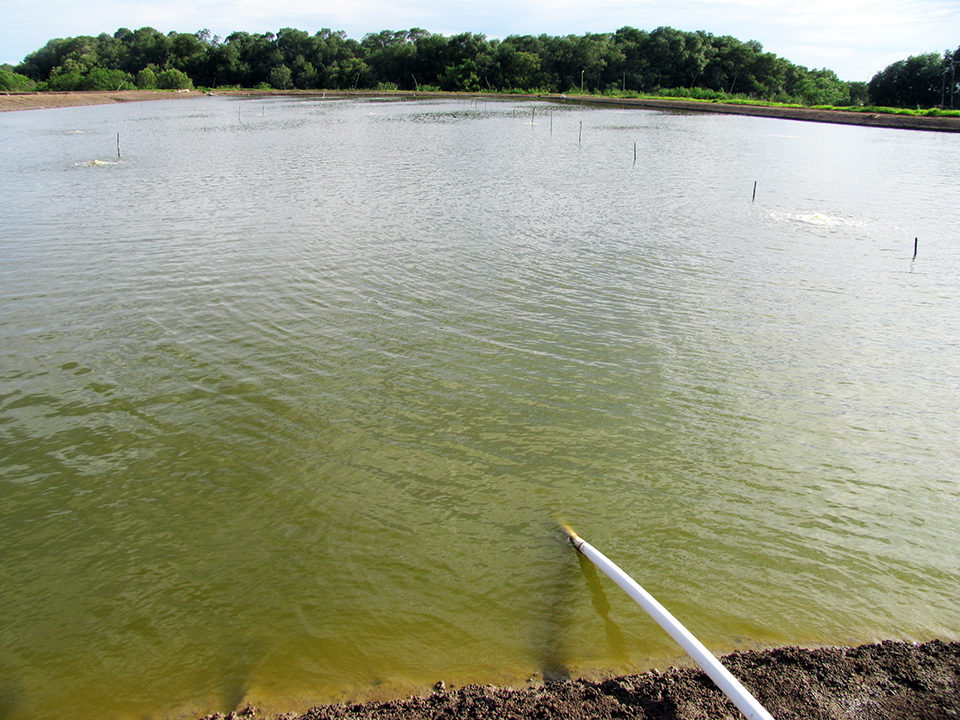
Pond fertilization has been the subject of much discussion, practical application and research. However, it remains much more an art than a science. Probably the only general agreement is that ponds need to be fertilized with nitrogen and phosphorus.
Potassium is necessary in fertilizers for agricultural crops, but the most recent research on this topic done at Auburn University in 2008 revealed that in waters containing about 2 mg/L potassium – the natural concentration in the source water – there was no benefit from applying additional potassium.
There is some evidence that silicate fertilization enhances diatom production in brackish or marine waters naturally low in this nutrient, but suitable application rates have not been established. Moreover, suggestions that such waters would benefit from fertilization with iron, manganese or other trace elements have not been verified through research.
Nutrient ratios
The oceanographer Alfred Redfield found that marine organisms typically have a molar ratio for carbon, nitrogen and phosphorus of 106:16:1 (weight ratio of 40:7:1). This ratio is known as the Redfield Ratio. It was expanded for diatoms that require silicon as a ratio of 106:15:16:1 (weight ratio of 40:13:7:1) for carbon, silicon, nitrogen and phosphorus.
It has been proposed that fertilizers for coastal and inland aquaculture ponds should have a ratio of one part phosphorus to seven parts nitrogen, but this usually results in excessive nitrogen application. The reason is that blue-green algae and bacteria fix nitrogen, which decreases the nitrogen requirement, and uptake of phosphorus by sediment increases the phosphorus requirement.
Moreover, if silicate is included, silicate sources are highly insoluble, and it is unclear how much silicate fertilizer should be applied. Thus, the ratio of nutrients that must be applied in fertilizer to provide the silicon-adjusted Redfield Ratio of silicon, nitrogen and phosphorus in pond water is not 13:7:1 and will vary from region to region based on water and sediment quality.
There also is no agreement on the concentrations of nitrogen and phosphorus needed to promote phytoplankton blooms or of silicate to favor more diatoms. There are fluxes of phosphorus between bottom soil and water. Nitrogen is lost from ponds by ammonia volatilization and denitrification, and it is added to pond water by nitrogen fixation and decomposition of organic matter.
The dynamics of silicate in ponds have not been studied thoroughly. There is no practical way to recommend fertilization rates that provide the critical concentration of nutrients for optimum phytoplankton productivity.
Application rates
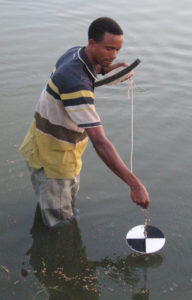
Fertilizer application rates should be based on the findings of experiments that ascertained the amounts of nitrogen and phosphorus that should be applied per hectare to provide satisfactory fish or shrimp production. The optimum fertilizer rate for new ponds or older ponds from which sediment was removed was 6 kg/ha of nitrogen and 3 kg/ha of phosphorus oxide (P2O5) – for a nitrogen to phosphorus (N:P) ratio of 4.58:1.
Ponds had calcium concentrations of 8-12 mg/L. In areas where waters have more calcium, the phosphorus input would likely have to be increased to overcome loss of phosphate through calcium phosphate precipitation.
In older sport fish ponds, nitrogen fertilization does not seem necessary. Good fish production can be achieved by phosphorus fertilization only, as nitrogen is derived from nitrogen fixation and subsequent decomposition of organic matter from dead nitrifying organisms.
However, nitrogen fertilization should not be stopped in older ponds for food fish production that have higher standing crops of culture animals than sport fish ponds. This is illustrated in Table 1 with data from a tilapia fertilization experiment.
An N:P ratio of 2:1 or 1:1 probably should be maintained in older ponds for food fish production. Similar ratios should be maintained in older ponds filled with brackish water or seawater in which nitrogen fixation is less than in freshwater.
In an experiment at Auburn University, the annual fertilizer dose was applied as a single application or divided into applications made at intervals of two months, one month, two weeks, one week and one day. The most effective increment was two weeks, but there was little difference between the two-week and monthly applications.
Boyd, Tilapia production, Table 1
| Fertilizer Analysis (%) N – P2O5 | Tilapia Production (kg/ha) |
|---|---|
| 0 – 20 | 651 |
| 5 – 20 | 947 |
| 20 – 20 | 930 |
Recommendations
The following suggestions can help guide pond fertilization practices.
- Use a fertilizer rate of 6 kg N and 3 kg P2O5/ha in new ponds or ponds from which sediment was recently removed.
- Reduce the nitrogen rate to 3 kg/ha or less in ponds more than 5 years old.
- Initially apply fertilizers at two-week intervals. Once a satisfactory plankton bloom is achieved, the frequency can be increased based on bloom density.
- Premix fertilizers in water and splash the resulting solution over pond surfaces to increase dissolution of nutrients in water.
- If a phytoplankton bloom is not achieved, or if the bloom is not dense enough, increase the fertilization rates of the N and P2O5 inputs, separately or both.
A 20-10-0 fertilizer applied at 30 kg/ha provides 6 kg N and 3 kg P2O5/ha, while 15 kg/ha of 20-20-0 fertilizer gives 3 kg N and 3 kg P2O5/ha. If mixed fertilizers are unavailable, the fertilizer compounds listed in Table 2 can be applied separately.
Boyd, Typical nutrient content, Table 2
| Fertilizer | kg N/kg Fertilizer | kg P2O5/kg Fertilizer |
|---|---|---|
| Urea | 0.45 | – |
| Ammonium sulfate | 0.20 | – |
| Ammonium nitrate | 0.34 | – |
| Sodium nitrate | 0.16 | – |
| Monoammonium phosphate | 0.11 | 0.52 |
| Diammonium phosphate | 0.18 | 0.48 |
| Superphosphate | – | 0.16 |
| Triple superphosphate | – | 0.46 |
To illustrate, the amounts of urea and triple superphosphate (TSP) necessary for 6 kg N and 3 kg P2O5/ha can be calculated in the example to right.
Applying 13.3 kg/ha urea and 6.5 kg/ha of triple superphosphate provides the same nutrient input as 30 kg/ha of 20-10-0 fertilizer or 15 kg/ha of 20-20-0 fertilizer.
Pond fertilization does not provide satisfactory results in ponds with acidic bottom soils or whose water has low alkalinity. Sport fish ponds with less than 20 mg/L total alkalinity, food fish ponds with less than 50 mg/L alkalinity and crustacean ponds with less than 90 mg/L alkalinity should be limed for effective fertilization. However, liming materials should be applied at least a week before fertilizers are applied.
(Editor’s Note: This article was originally published in the July/August 2010 print edition of the Global Aquaculture Advocate.)
Now that you've reached the end of the article ...
… please consider supporting GSA’s mission to advance responsible seafood practices through education, advocacy and third-party assurances. The Advocate aims to document the evolution of responsible seafood practices and share the expansive knowledge of our vast network of contributors.
By becoming a Global Seafood Alliance member, you’re ensuring that all of the pre-competitive work we do through member benefits, resources and events can continue. Individual membership costs just $50 a year.
Not a GSA member? Join us.
Author
-

Claude E. Boyd, Ph.D.
Department of Fisheries and Allied Aquacultures
Auburn University
Auburn, Alabama 36849 USA[117,100,101,46,110,114,117,98,117,97,64,49,101,99,100,121,111,98]
Tagged With
Related Posts
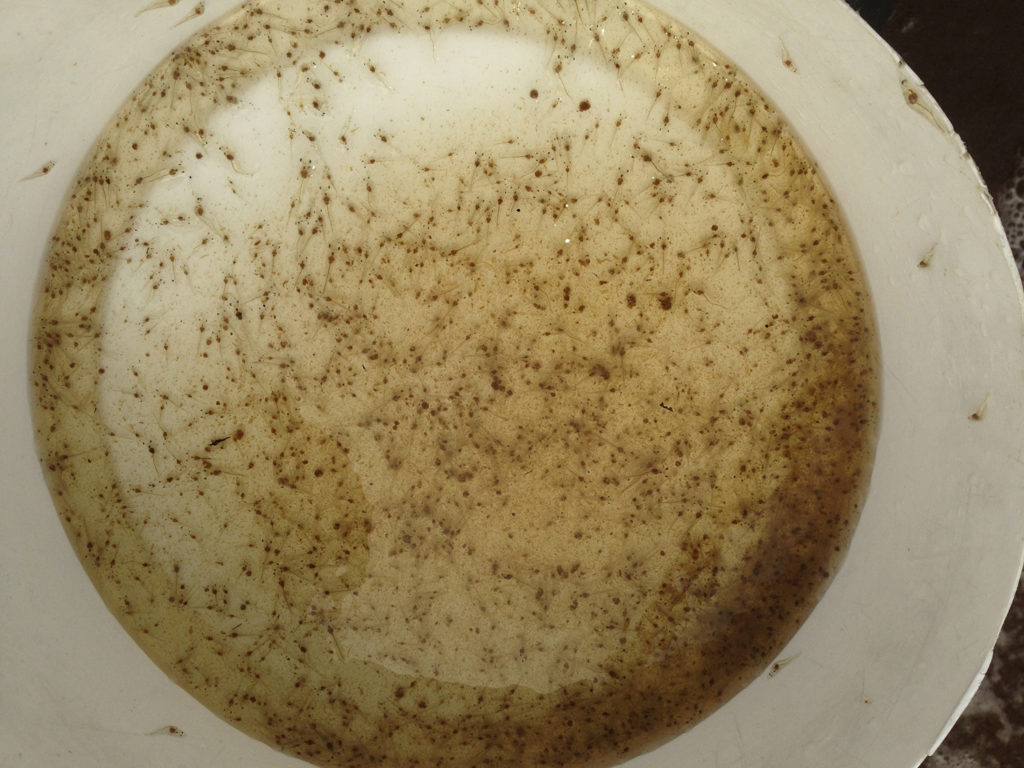
Responsibility
Carbon-nitrogen ratios in pond fertilization and biofloc systems
Prof. Claude Boyd on the importance of carbon-nitrogen ratios for pond fertilization and biofloc systems, and the relevance of precise carbohydrate inputs.

Health & Welfare
10 paths to low productivity and profitability with tilapia in sub-Saharan Africa
Tilapia culture in sub-Saharan Africa suffers from low productivity and profitability. A comprehensive management approach is needed to address the root causes.
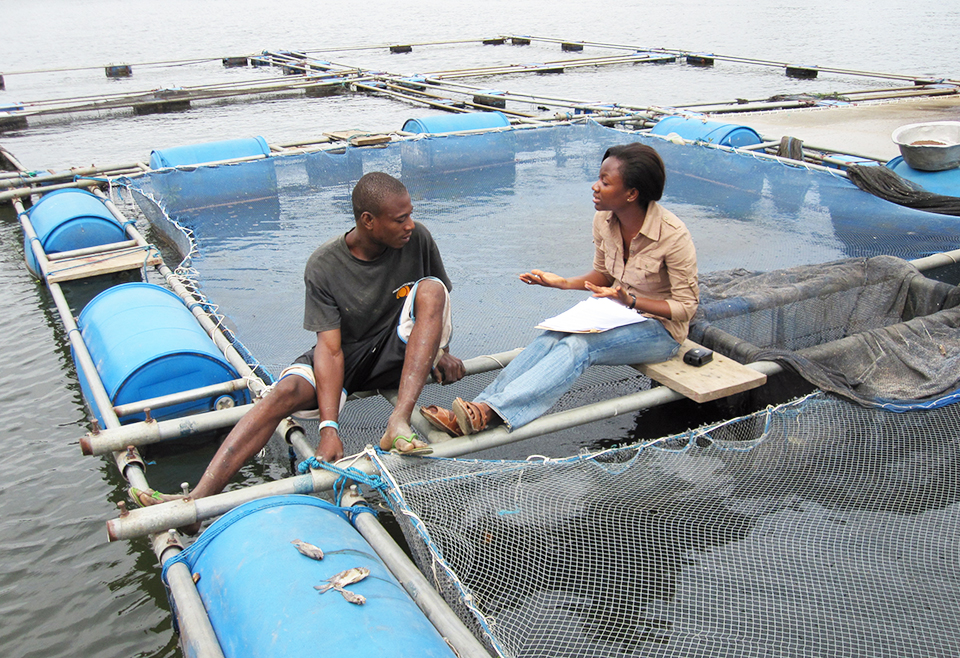
Health & Welfare
A look at tilapia aquaculture in Ghana
Aquaculture in Ghana has overcome its historic fits and starts and is helping to narrow the gap between domestic seafood production and consumption. Production is based on Nile tilapia.
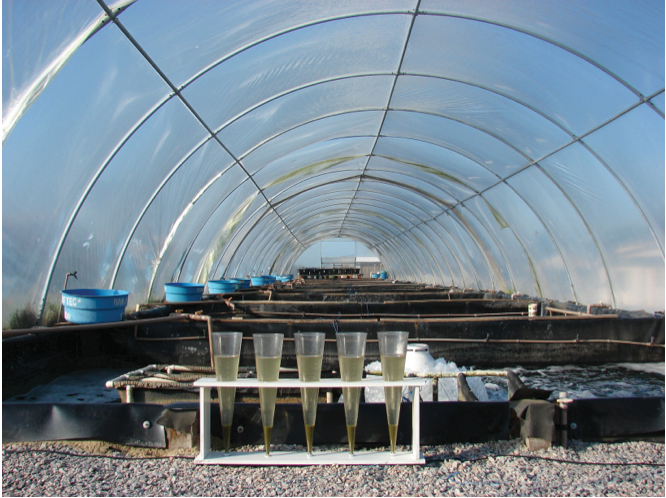
Health & Welfare
Ammonia addition enhances microbial flocs in nursery phase for Pacific white shrimp
In a study, “pre-fertilization” in the nursery phase of a biofloc system for shrimp was tested. The objective was to accelerate the biofloc formation to minimize ammonia concentrations, avoiding high peaks during culture.

